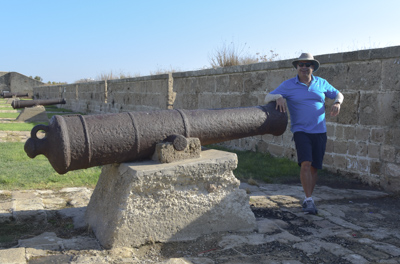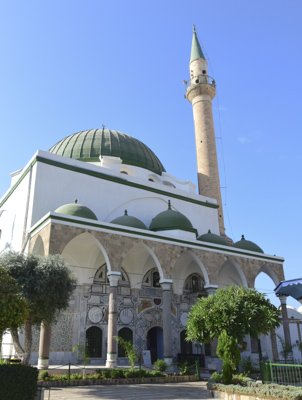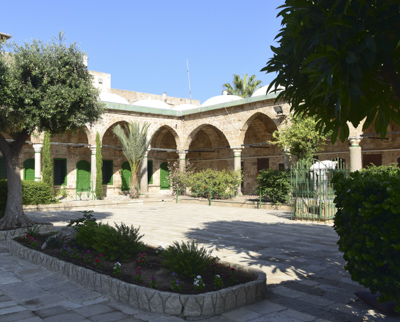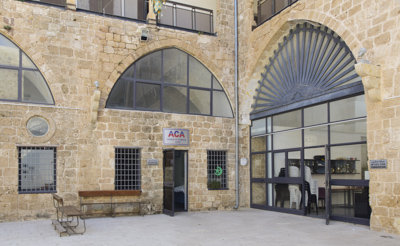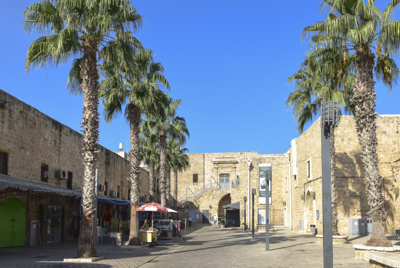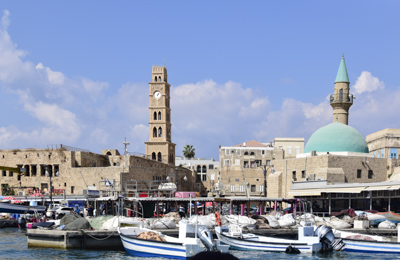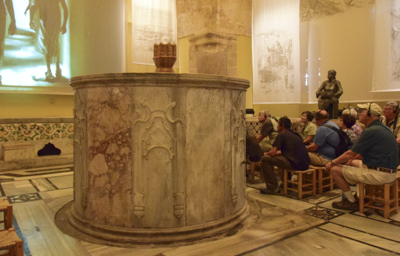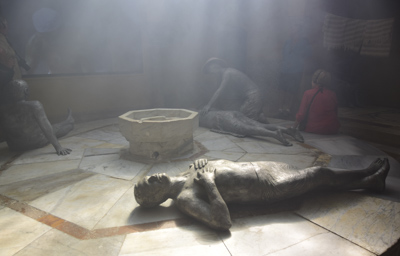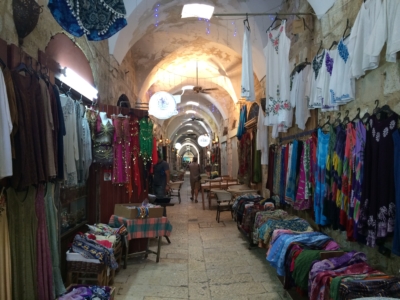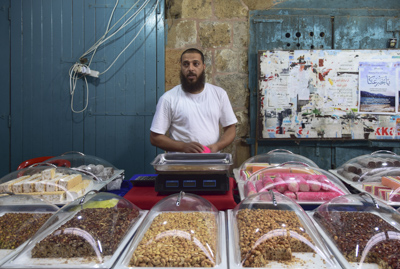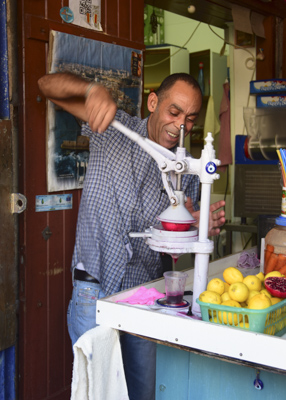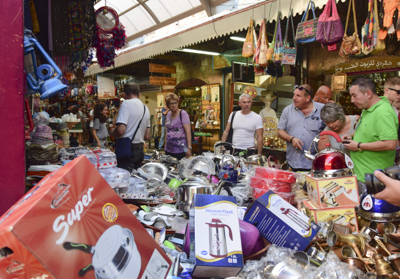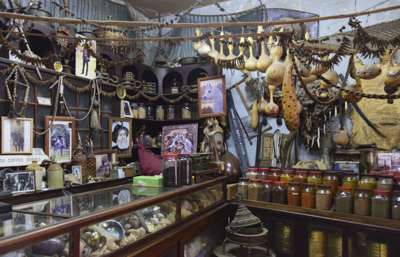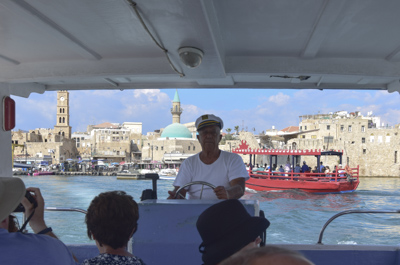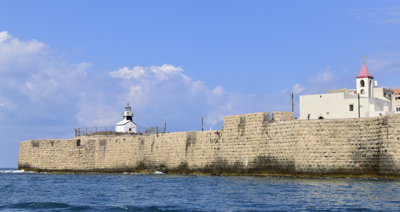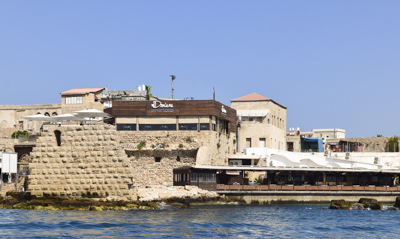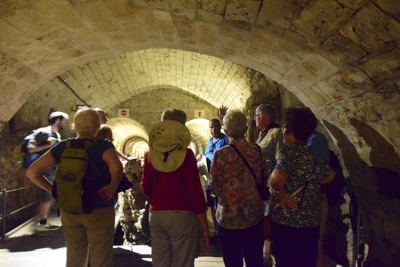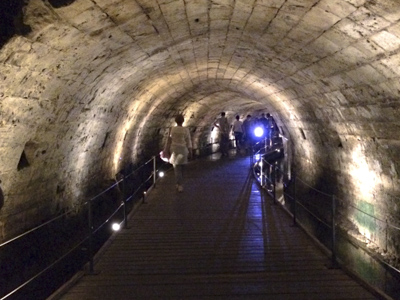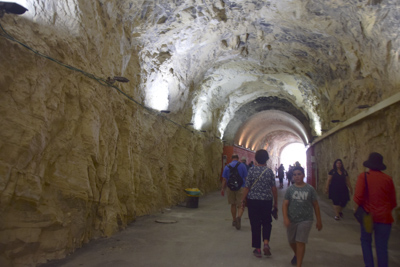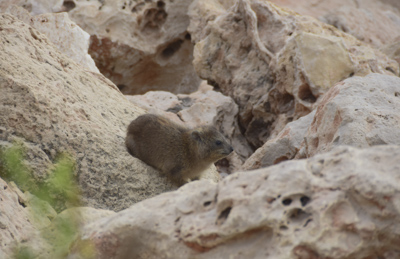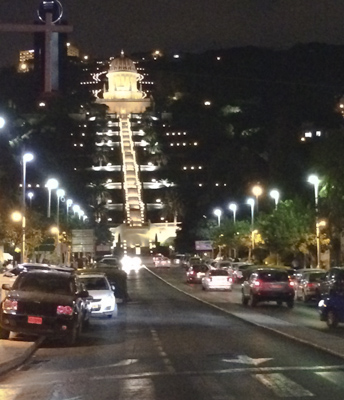Thursday – October 5, 2017
The ancient walled city of Akko, also known as Acre, is a beautiful town with a long and rich history. Repeatedly conquered and occupied by different civilizations throughout the ages, the Old City of Akko is a UNESCO World Heritage Site.

The historic port city has been inhabited for 4000 years, since the Middle Bronze Age (2,000 BC), making it one of the oldest cities in the world.

The current wall was rebuilt in the 18th century under Ottoman rule by Zahir al-Umar, the Arab ruler of Galilee. Then it was fortified against the French in 1780 by his successor, Jazzer Pasha, and Akko became the regional capital of the Ottoman Empire.
We climbed up onto a section of the wall to look at the view of the city and Rafi explained the history. Then we walked to El-Jazzar Mosque which was built out of stones cut from the ancient ruins of Caesarea and finished in 1781. This is the second largest mosque in Israel.
I was glad we visited the mosque because this was the first one we entered on this trip. I was disappointed that we did not visit any mosques in Jordan. El-Jazzar Mosque was a lovely peaceful place and the surrounding courtyard reminded me of medieval cloisters. Ahmad Pasha al Jazzer and his successor, Suleiman Pasha, were buried on the grounds.
After we left the mosque we went to the Akashi Art Museum which was adjacent to the Knights’ Hall in Old Acre. The museum features rotating exhibits of modern Israeli art in an ancient building dating back to the Ottoman period.
Akko is full of interesting nooks and crannies and is comprised of a complex network of buildings, alleyways, museums, fortresses, courtyards, and knights’ halls. In another courtyard, we found the American Corner Akko which provides information about the United States to international students to promote better relations.
Hamam al-Basha was built in 1795 by Jazzer Pasha. It had a series of hot rooms and a hexagonal steam room with a marble fountain. The Turkish bath was part of a transformation of Acre during the Ottoman Period from a small fishing village to a teeming port and major trade center.
Today, the Hamam al-Basha is a living-history museum complete with audio-visual and static displays. The story of the daily life and historical events during the height of the Ottomans are told in a program called the “Last Bath Attendant.”
No visit to an acient middle-eastern city is complete without a walk through the “souk” or market:
We paused at Kurdi Hamudi’s Spice and Coffee Shop and talked with his son who is a fourth-generation grinder and seller of spices. He explained the importance of spices during ancient and modern times while we sniffed the aromas emanating from jars of fragrant spices.
The shop walls were visual feast and decorated with gourds, animal skins, fishing nets, ancient spice grinders, stuffed animals, and model ships. All the spices were prepared by Hamudi himself and are of exceptional quality.
We walked down to the ancient Pisan Port which has countless small fishing boats, dinghies, and yachts. We boarded one of the bright red tourist boats for a short harbor tour. Vibrant Middle-Eastern music blared as we rode past the sea walls to a small lighthouse at the end of the marina.
We had a delicious lunch at Doniana Restaurant on the harbor overlooking Akko’s bay. Akko is known for its fresh seafood.
Acre became a center of international trade and was an important city during the Crusades (1100-1390 AD). Crusaders made Acre their main port in 1104 which gave them access to the Asiatic spice trade that made them prosper. The Templars were a military-monastic order who aided pilgrims to visit holy sites in Israel. In 1187, they made their home in Acre and built their quarter in the city with a strong fortress protected by two towers with 28-foot thick walls.
The Templars dug a 350 meter long strategic tunnel which extended from their fortress in the western part of the city to the port. The underground passageway was discovered in 1994 and opened to tourists five years later.
Then we drove along the shore about 15 minutes to the Grotto Caves at Rosh HaNikra which is located very close to the Lebanese border. An Israeli naval ship was anchored offshore.
We walked through The Bridge and Railway Tunnel which had been used for trains running along the Cairo-Istanbul line. Rosh Hanikra was the location where Israeli and Lebanese officials negotiated an armistice agreement in 1949.
A cable car brings tourists down to the natural caves and tunnels which were formed by the constant action of waves on the soft chalk rock. We entered the grotto and followed a slippery path through the solid rock.
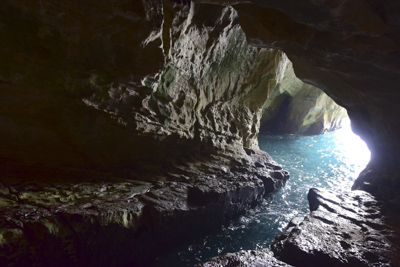
We walked through the cave and saw the waves enter with loud gushing sounds. The path led back out into bright sunshine and a great view of the Mediterranean Sea.
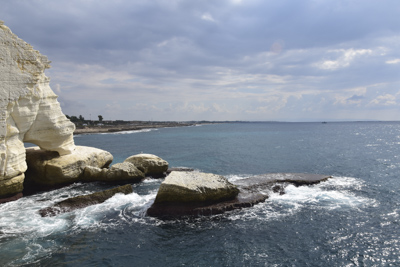
As we walked back to the bus, we saw a colony of hyraxes sunning themselves on the rocks. I learned that the hyrax looks like a rodent, but it is related to elephants and manatees.
We returned to our lovely hotel and rested before dinner. We gathered and began to walk down the hill to the old “German Colony” which is now a neighborhood of restaurants, cafes, and boutiques. On our way through an interesting neighborhood, we passed several sights which Rafi pointed out to us.
There was interesting public art works and also reminders of a painful chapter in history. Haifa is one of Israel’s “mixed cities” with a significant population of Palestinians, Christians, and Muslims. We were walking through a neighborhood which had been mostly Palestinian in 1948. The families who fled, left signs and photos on their doors to remind passersby that the houses had belonged to Palestinians.
We stopped in at a small shop that made felafel, fried chickpea balls, and Rafi said they were the best in all of Haifa. The owner gave each of us a fresh sample right out of the cooker. Delicious!
Down the street there was a bakery with the largest assortment of baklava I have every seen in my life!
We finally arrived at the foot of the Baha’i Gardens on Ben Gurion Avenue. The restaurants and cafes were crowded with young people enjoying an evening out. We went to Fattoush Restaurant and enjoyed a tasty Middle Eastern dinner. I had a stir-fried dish called Sajiyeh which was amazing!
Sign at the door of Fattoush:
It was a long walk back up the hill to the Bay Club Hotel but I had time to think and reflect on another incredible day filled with amazing experiences.
?
